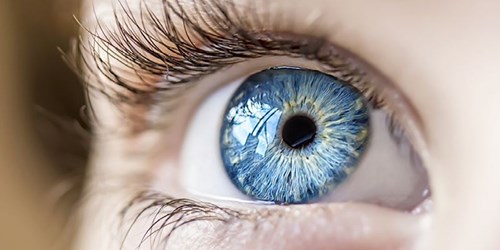Eyelid Surgery (Blepharoplasty)
Upper eyelid surgeries to repair sagging eyelids and/or lower eyelid surgeries to repair bags under the eyes

Eyelid surgery comprises three main procedures:
-
Upper blepharoplasty: Eyelid lift surgery to correct drooping or sagging upper eyelids
-
Lower lid blepharoplasty: Lower eyelid surgery to correct the appearance of swollen lower eyelids and remove bags under the eyes
-
Four-lid blepharoplasty: Combined eyelid surgeries performed on the four eyelids – to lift
upper eyelids by removing excess skin – combined with surgery to remove bags from
below the lower eyelids
Upper blepharoplasty: Eyelid lift surgery
Excess skin that rests on and weighs down the upper eyelids can limit the field of vision, and
aesthetically, can make the patient appear old and tired. Drooping upper eyelid skin, called
dermatochalasis, is caused by loosened eyelid tissue, sometimes accompanied by accumulated
fat tissue.
Upper blepharoplasty, eyelid lift surgery to repair the condition, removes the excess skin and
fat on the upper eyelids to improve field of vision, and cosmetically, to give the face a fresh
natural and look.
Lower lid blepharoplasty: Lower eyelid surgery
Lower eyelid surgery rebuilds the soft tissues in the lower eyelids and removes excess fat, if
necessary, while reshaping the lids to look smooth.
Four-lid blepharoplasty
Because eyelid skin ages early, many people undergo blepharoplasty before or instead of full
facial plastic surgery. Patients choose to undergo four-lid blepharoplasty (both upper eyelid lift
and lower eyelid surgery) to remove both excess skin on the upper eyelids and bags under the
lower eyelids. Sometimes, patients combine upper eyelid lift surgery with eyebrow lift surgery.
Surgery to correct drooping upper eyelids (ptosis)
Drooping upper eyelids can occur in adults (acquired ptosis) or in children (congenital ptosis).
In adults, drooping upper eyelids are mainly caused by a weakening of the levator muscle,
which controls the eyelid. Drooping eyelids can partially cover the pupil, impairing the field of
vision and vision quality. It is also an aesthetic concern for patients.
Ptosis in children is most often caused by a developmental deficiency in the levator muscle
responsible for raising and lowering the eyelid, which can also cause other problems.
Ptosis-correction surgery lifts the eyelid by shortening the levator muscle to help the eyelid
function effectively while contouring the eyelid for maximum cosmetic results.
Brow lift surgery/Eyebrow lift surgery
Eyebrow position affects facial expressions and how a person’s mood and personality are
perceived by others. Along with drooping eyelids that can occur with age, people can
experience changes in the upper face that cause eyebrows and the forehead to droop.
Eyebrow position can lower due to gravity or a weakening in the muscles around the eyes or
forehead that are responsible for raising the eyebrows. The eyebrows "press" the eye
downward, moving excess skin to the upper eyelid and affecting the appearance of the area
around the eye. Severely drooping eyebrows can affect the field of vision. The solution is
usually brow lift surgery as cosmetic repair.
Eyelid surgery combined with eyebrow lift surgery
For most people with drooping eyebrows, the problem is accompanied by excess skin in the
upper eyelids caused by excess or lax eyelid skin and muscle (dermatochalasis). In many cases,
upper eyelid lift surgery may be sufficient to solve the vision problem, but combining the
surgery with cosmetic eyebrow lift surgery will give the patient a fresher look.

